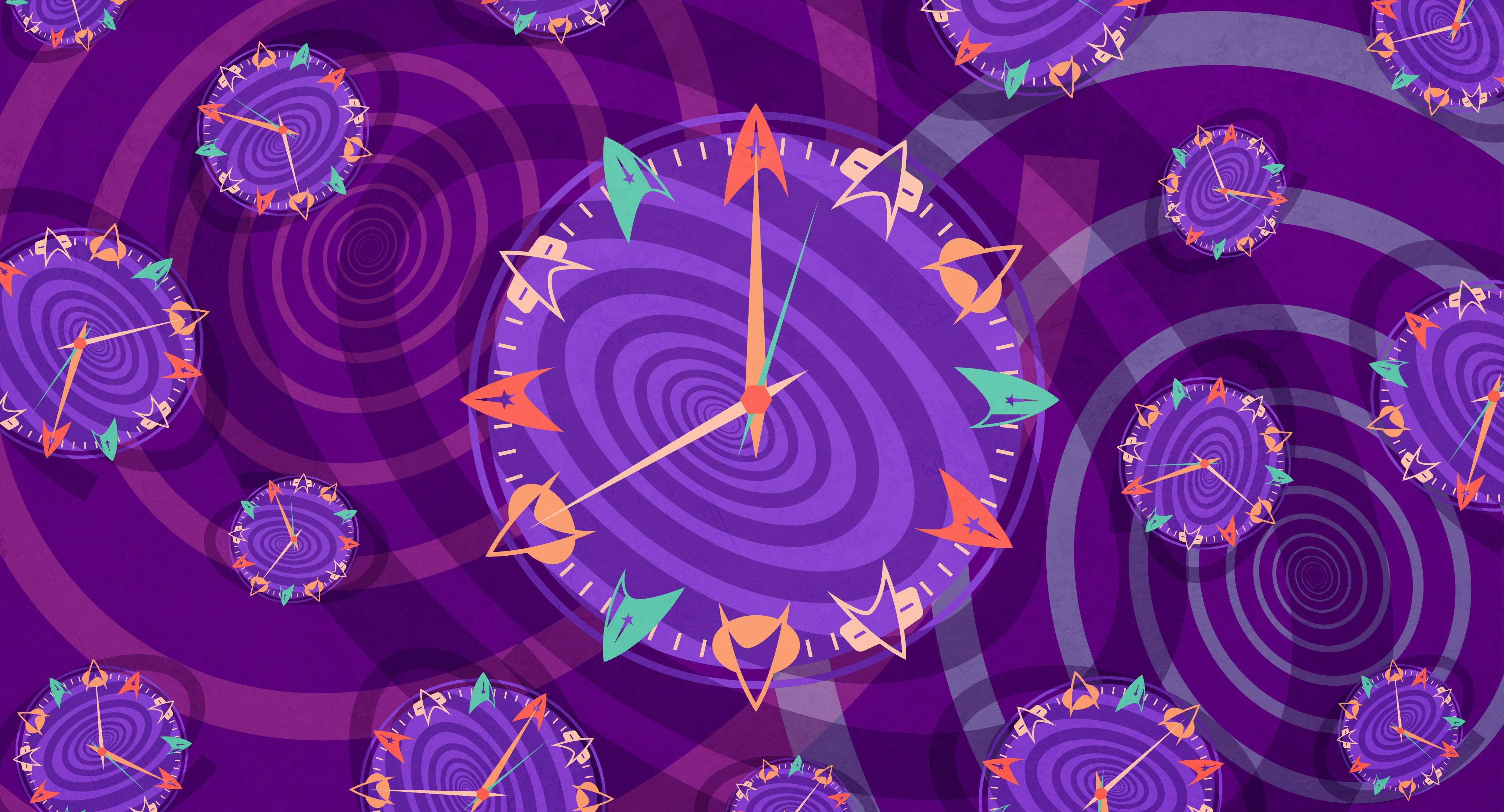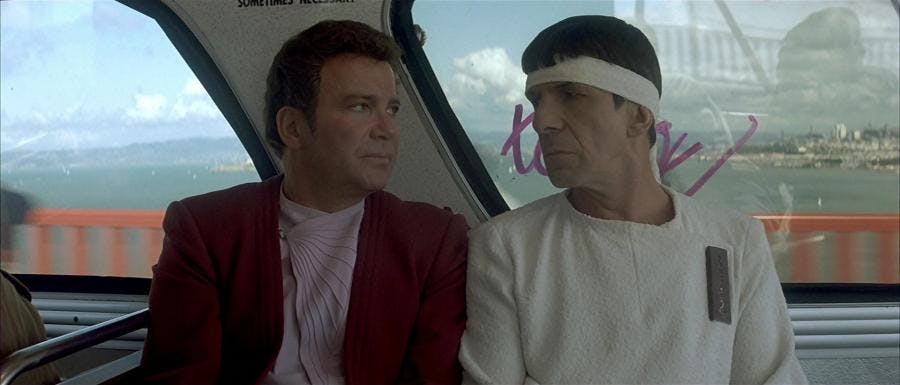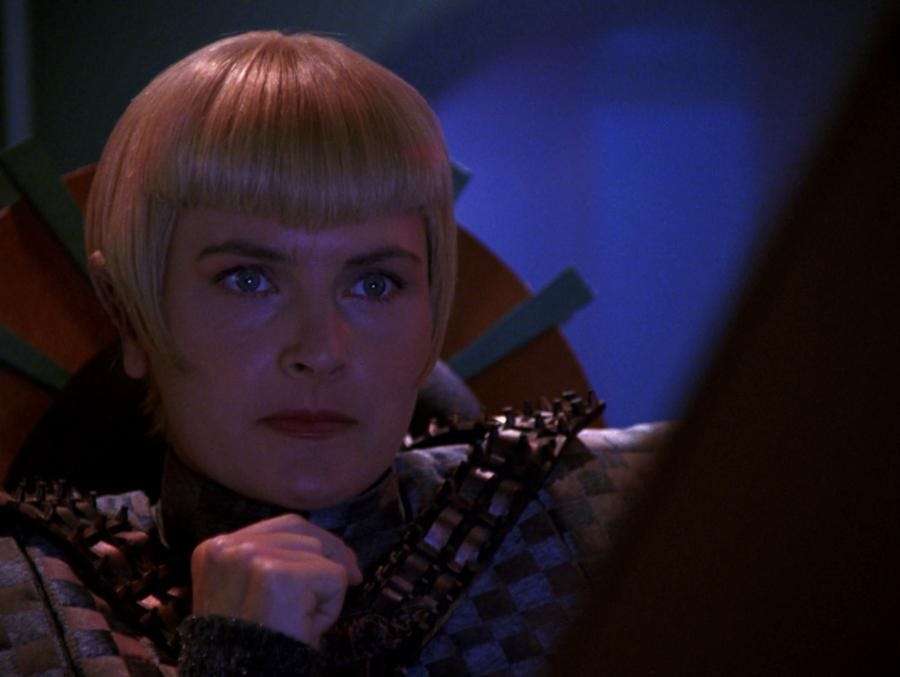Published Apr 6, 2021
A Time Traveller’s Guide To Star Trek Adventures
Just make sure you don't break the Temporal Prime Directive!

StarTrek.com
Although space has been considered the final frontier since Star Trek’s beginning, there is another barrier that the Federation has been breaking all along: time. Time travel has been part of Star Trek since The Original Series, with every crew having to deal with some sort of temporal shenanigans. Your Star Trek Adventures crew should be no different! Of course, time travel as a plot device can be tricky. Luckily, the Game Master only has to have it come together for their friends at the table, rather than hold up to millions of people picking through the story beats online. If you want to incorporate time travel into your Star Trek Adventures story, here are some tips and tricks that will keep your story together.
Time travel stories in Star Trek are about cause and effect. If history couldn’t be changed, the stories wouldn’t have a central conflict. Someone wants to change a pivotal moment in history, figures out a way to do so and the story deals with that. The fallout can play out in a single session, a running subplot such as the Temporal Cold War or even something as big as playing through an alternate setting like the Mirror Universe or Kelvin timeline. Make sure, however, if planning to go big, to make that choice clear to players. It’s as important as discussing which era a Star Trek Adventures game will be set.

StarTrek.com
One of the big appeals of these sorts of adventures is being able to get close to great moments in Star Trek history. Think of "Trials and Tribble-ations" where the crew gets to see Kirk and his legendary crew in action. It could be a chance to explore a favorite episode that everyone shares or to dig into an element of history that is yet unexplored by the official media. Star Trek Adventures is built to run three eras out of the core book. Time travel can let characters from one era experience a pivotal moment in another.
There’s also a personal element to time travel. "Tapestry" is a good example of this, where Q shows Captain Picard the road he didn’t choose when he makes a different choice early in life. Star Trek Adventures characters have history built in thanks to choices made in character creation. A story centered around personal time travel might focus on a big event in a character’s history like a transporter accident. What if they could go back and save that person’s life? The story could also focus on whether a character accepted or rejected one of their backgrounds. How would life be different if someone who grew up in Starfleet decided they didn’t want to join up?
A Timeline Through the Star Trek Universe
Stories like these also offer a chance for players to try out something new. The major characters from each era have available write-ups. The players could take on those iconic characters or the GM could bring in a guest star to play that character. For personal stories, the rest of the crew could create secondary characters built specifically for the main character’s past and influence them in one direction or the other.
Star Trek time travel tends to be about fixing the timeline. Someone or something has broken it, the main characters discover the break and have to figure out how to put things right. Even a story where the characters change history like Star Trek IV: The Voyage Home is about fixing a past mistake; humanity’s short sightedness via environmental issues require the crew of the Enterprise to save Earth once again.

StarTrek.com
These are mystery stories at their heart. They contain three questions that must be solved.
- Why is the timeline different?
- Who or what is responsible?
- How can we fix it?
How those questions get answered is up to the players. It’s good to have a solution in mind but don’t be afraid to let the players come up with a better one. It’s a puzzle to be solved but remember that Star Trek characters often come up with unconventional solutions.
At the end of the day, the timeline should return to normal unless the Game Master wants to take the campaign in a wild new direction. There can be unintentional consequences to mucking about with the timeline. Sela, the alternate timeline daughter of the Tasha Yar introduced in "Yesterday’s Enterprise" that was revealed in "Redemption" is a dramatic example of this idea. Setting up a future villain is a good choice if the players left something in the timeline unresolved. Consequences can also show up in ways to reinforce the good actions the players made. Maybe that poor doomed officer who originally died in the transporter accident shows up as a civilian that never decided to join Starfleet because of what the players did in the past.

StarTrek.com
For additional discussion of time travel story elements such as ways for how to travel to the past or the future, check out the The Sciences Division supplement for Star Trek Adventures.
Rob Wieland (he/him) is an author, game designer and professional nerd who developed the adventure classifications for Star Trek Adventures. He lives in Milwaukee, Wisconsin with his wife, two cats and a future Starfleet Admiral.

